Worlds Within Worlds: The First Heroic Fantasy (Part I)
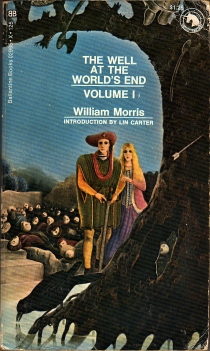 Who was the first person to write high fantasy?
Who was the first person to write high fantasy?
It seems like a simple enough question. By “high fantasy” I mean a story set in a world that is not this one. John Clute, in The Encyclopedia of Fantasy, defines high fantasies as stories “set in otherworlds, specifically secondary worlds, and which deal with matters affecting the destiny of those worlds.” In this definition, ‘Secondary worlds’ is Tolkien’s useful term for a fictional, self-consistent world with its own geography and history.
There’s a bit of ambiguity here, though. A secondary world is not necessarily a wholly other world. Tolkien intended his world of Arda to represent this world in a mythic, pre-historic time. Similarly, Robert E. Howard’s stories of Conan and Kull were meant to take place before the dawn of recorded history, and even most (if not all) of Clark Ashton Smith’s stories are given a precise relation to reality. In fact, Smith locates his stories almost everywhere in the existing universe that a fantasy could conceivably be placed: in the past (Hyperborea, Poseidonis), in the far future (Zothique), on other worlds known (Mars) or unknown (Xiccarph).
These choices of settings justify the fantasy. They explain how the fantasy can be imagined to exist, and make suspension of disbelief easier by linking the fantasy to reality. They frame the fantasy, if you like, in a connection to the real. That’s interesting, but it makes you wonder who the first person was that discarded the frame, and stepped wholly outside of reality. Or, to reframe my original question: who was the first person to come up with the idea of setting a story entirely in a world that is not our own? Who told the first story that had no link to the real world?
Lin Carter oversaw the reprinting of many valuable older fantasy texts as the editor of the Ballantine Adult Fantasy series, and he (along with L. Sprague de Camp) believed that the answer to my question was William Morris, author of fantasies including The Well at the World’s End and The Wood Beyond the World. At first glance, those books definitely look like high fantasy. But I’m not sure that they’re actually set in another world. I’ll elaborate more on that point in a bit.
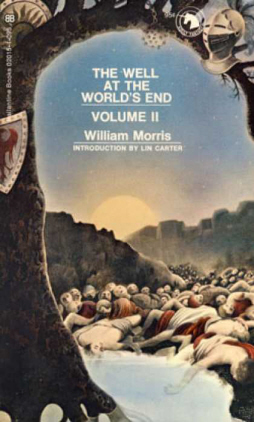 What I want to say first is this: whether Morris’ stories are high fantasy or not, Carter was wrong. There is a writer who wrote something essentially recognisable as high fantasy, complete with an independent secondary world, decades ahead of Morris.
What I want to say first is this: whether Morris’ stories are high fantasy or not, Carter was wrong. There is a writer who wrote something essentially recognisable as high fantasy, complete with an independent secondary world, decades ahead of Morris.
I’ll name that writer in a later post. Before I do, there are a couple of related questions to answer. To start with: why am I quibbling with the idea that Morris wrote in an invented world?
As is so often the way, to answer that question I have to ask another question first: what is an invented world, or independent secondary world? A setting with its own geography and history different from our own, sure; but how different?
You might think that books are written out of an urge either to imitate the world, or to create something new, and that you end up with either realism or fantasy (if you have a lit background, you might say ‘either the novel or the romance’) depending on which urge the writer follows. But this is not necessarily so. The fact is, the urge to imitate and the urge to create are both present in almost any literary work.
Let’s accept that any setting in literature is a kind of ‘secondary world’, in the sense that it exists only through the skill and imagination of the writer. Even in non-fiction, a setting only exists as it is depicted by the writer (and understood by the reader). What this means, practically, is that any setting could be made into a fantasy world.
Toronto was selected as the site of the 2012 World Fantasy Convention the other day, so I’ll use it for my example. Let’s say you’re reading a book set in Toronto, and let’s say you know Toronto well enough that you can recognise references to Bloor Street and Yonge Street and Queen Street, and follow the geography enough to see that it’s all accurate.
Now let’s say that the story mentions that the city has a population of fifteen million people. Or the story refers to the CN Tower as an amusement park ride. Or the story describes the Toronto Maple Leafs hockey team as a perennial powerhouse who’ve won the Stanley Cup repeatedly in past decades. If you’re Canadian or a hockey fan, you know that these things are not even remotely close to true. So are they mistakes, or are you suddenly reading about a fantasy world?
On the other hand, what happens if you pick up a book set in a Canadian city named ‘Hogtown’, which has a population of four and a half million, a weird concrete needle several hundred metres high near its waterfront, and a truly terrible hockey team that sets new standards for futility? Does the slight difference in the name make it a different world, when so much else is the same?
Probably these questions could be answered either way, depending on the text. It’s interesting, though, that there’s a famous example fitting the second set of questions: Thomas Hardy set many of his books in south-west England, but gave the area the name ‘Wessex’, and often chose to refer to real places under fictional or arcahic names — the city of Dorset, for example, became Casterbridge. “No detail is guaranteed,” he wrote. “… The portraiture of fictiously named towns and villages was only suggested by certain real places, and wantonly wanders from inventorial descriptions of them.”
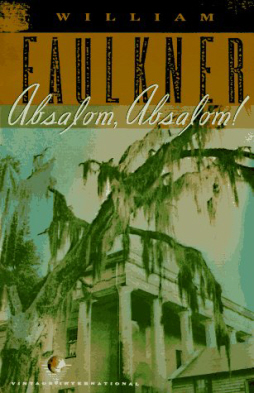 Now consider another writer not thought of as an inventor of worlds: William Faulkner. Many of his tales were set in ‘Yoknapatawpha County’, a fictional county based on the real Lafayette County. Faulkner created a history for his county, and even drew up a map printed in his book Absalom, Absalom (Hardy also had a map of Wessex).
Now consider another writer not thought of as an inventor of worlds: William Faulkner. Many of his tales were set in ‘Yoknapatawpha County’, a fictional county based on the real Lafayette County. Faulkner created a history for his county, and even drew up a map printed in his book Absalom, Absalom (Hardy also had a map of Wessex).
These aren’t independent secondary worlds as I mean them (or, I think, as most people would), but they’re heading in that direction. Neither are fantasy, which actually helps mark them out as not being independent worlds: the point of Wessex and of Yoknapatawpha County is that they’re part of the real world. Their history is the history of the country that includes them, their society is recognisable as the society of the real world of their time. The aim of the writers was to hew close to reality. They’re mimetic, or imitative of the real world — they just also happen to be a bit more creative than most mimetic fiction, adding something to the world in order to better explore it.
So now let’s go back to William Morris. Let’s consider his three most famous fantasies, The Wood Beyond the World, The Well at the World’s End, and The Sundering Flood. Are they wholly independent of the real world? All these books boast fictional geographies (The Sundering Flood even has a map). The social setting is fully-realised and distinctive, feeling like the European Middle Ages, in terms of technology, class structure, and so on. They seem to be independent secondary worlds.
The Sundering Flood refers, on its first page, to ‘Christmas’ and ‘St. Thomas of India,’ before revealing on the next page that it is being written by a monk at Abingdon, in England. On the other hand, the monk only says that he ‘gathered’ the story, so you could reasonably argue that it’s a tale of another world being written by a man in this world.
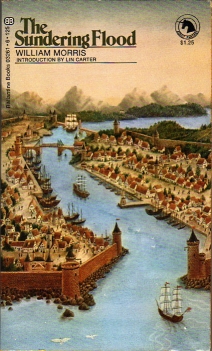 Still … I was hoping to find the first example of a fantasy world with no connection to this world at all. The use of the monk is an example of a frame linking the fantasy world to the real world. So perhaps we can set The Sundering Flood aside.
Still … I was hoping to find the first example of a fantasy world with no connection to this world at all. The use of the monk is an example of a frame linking the fantasy world to the real world. So perhaps we can set The Sundering Flood aside.
But: The Wood Beyond the World mentions a ‘christening’, uses the phrase ‘sons of Adam’, and one character in dialogue mentions ‘Mahound’, a medieval European name for Mohammed. Similarly, The Well at the World’s End refers to ‘Saracen beads’, and mentions both the city of Rome and the city of Babylon; it also refers to pagan Gods like Diana and Venus, and to details of Christian belief (like the Trinity) and practice (like the Mass). So are they really set in independent worlds?
Lin Carter certainly thought so. In his introduction to the second volume of The Well at the World’s End, he wrote: “Although the text contains a few scattered references to Babylon, the pope, and various saints, and although most of the characters’ names are familiar enough in the world we know, the World of the Well is one of those delightful literary lands which (in James Branch Cabell’s charming phrase) have somehow or other managed to avoid the wear and tear involved in ever having actually existed.”
This sounds good, but … surely “scattered references” are what go to create a world in fiction. If the references are to this world, isn’t it therefore set in this world? How many references would it take to firmly establish the story in this world? Where to draw the line?
I suppose you could argue that the ‘Rome’ of The Well at the World’s End is not necessarily the ‘Rome’ of this world, of our own history. Nobody in the story actually goes to the city, after all. Rather, the geography of the book is defined on a smaller scale; there’s the country of Upmeads and its surrounding lands, but nobody ever says anything along the lines of ‘right, Upmeads is five hundred miles north-west of Rome.’ You could easily imagine Upmeads as a small kingdom in the British Isles, France, or elsewhere in Europe, if you were of a mind to, or then again you could imagine it as existing in its own world — if you assume that world also has cities called ‘Rome’ or ‘Babylon.’ But how reasonable is it to make that assumption?
I think we should perhaps establish some fantasy equivalent of Occam’s Razor here; instead of “don’t multiply terms unnecessarily’, we can say ‘don’t multiply realities unnecessarily’. If a real-world place is named in a story, we should probably assume that it’s meant to refer to the real-world place unless something else in the story leads us to think otherwise.
Specifically, a parallel-world story may well involve real names for fictional places. Of course, parallel-world stories came into being relatively late in the game, surely long after fantasy worlds. Still … again, where to draw the line? If we find a story in which magic works, but which seems to take place in the geography of the real world, should we look at it as a fantasy world or the real world?
It depends, I think, on whether the setting is meant to evoke the real world, and not a parallel thereof. If so, I think we have to accept the story’s world as the real world, just a fictional iteration of the real world where magic works. I’d say the distinction is that a parallel world, like a fantasy world, will have its own sense of history and its own logic, causing its characters to be identifiably different from people in the real world. If the magic is so highly-developed that history has changed, or in general that the world of the story is radically other than the world as we understand it, then it is effectively a fantastic parallel world that we’re looking at.
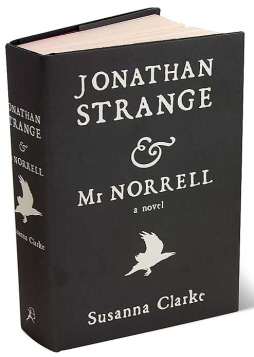 So, if we read a story about King Arthur, set in England, and Merlin casts a spell, we’re not necessarily reading an invented secondary world. On the other hand, if we read Susanna Clarke’s Jonathan Strange & Mr. Norrell, the book seems to be set in Jane Austen’s England, complete with the city of London and the Napoleonic Wars — except we soon become aware that not only does magic work, it seems to have its own history, which has shaped the history we know in curious ways. That, to me, is a parallel world. Is it an independent secondary world?
So, if we read a story about King Arthur, set in England, and Merlin casts a spell, we’re not necessarily reading an invented secondary world. On the other hand, if we read Susanna Clarke’s Jonathan Strange & Mr. Norrell, the book seems to be set in Jane Austen’s England, complete with the city of London and the Napoleonic Wars — except we soon become aware that not only does magic work, it seems to have its own history, which has shaped the history we know in curious ways. That, to me, is a parallel world. Is it an independent secondary world?
Once again: what is an independent world?
Does a fantasy otherworld need to have its own geography? Strange & Norrell doesn’t. Does it need to have a consistent history? Well, could Wonderland in Alice’s Adventures in Wonderland be said to have a consistent history? Can a fantasy world exist without distinctive geography or history? What about people? Can the people act like people in the real world do, or did; or do they have to have their own customs and ways of being to reflect their specific experiences? If so, how distinct do they have to be from people in the real world?
It seems to me that there are four characteristics which can establish a setting as an independent world, provided that the world is not explicitly stated to be a part of this world, existing in some other time or in some unexplored part of the globe; and provided as well that the putative independent world is not also stated to be a dream or fiction in this world. In other words, if no link to reality appears to exist, a fantasy world will have all or most of the following characteristics:
Firstly, it seems to me that a fantastic otherworld almost always has its own logic. ‘Logic’ here can mean its own physical laws, or magical laws equivalent to physical laws. Or, ‘logic’ can be dream-logic. It can be narrative logic. The point is that if the way the world operates, its laws, are different from our own, then we may be looking at a fantasy otherworld.
Secondly, geography. A fantasy otherworld often, almost always, indeed almost by definition, has its own geography. A world needs to be a world. That geography should be distinct (‘there’s this place, and then there’s also that place over there’), and preferably named; although what makes a name can be a discussion in itself. Consider ‘the castle that was struck by lightning’ versus ‘The Castle Struck By Lightning’ — one could imagine the second being the name of a castle in some Arthurian romance.
Thirdly, the world may have its own history. This history may be elaborate, or it may be simple and personal, but the point is that the world is partly defined by its past. The different places of the world have interacted, trading with each other or warring with each other, and the shape of those interactions helps define the setting and the story.
Fourthly, people may act differently. They may have their own customs, or think differently than we do, or have a different level of technology, or have invented things in a different order than we did. Their language may be different, more archaic, reflecting their different habits of thought. But, then again, perhaps none of these things are present. What I’m trying to describe are people who we are meant to think of as a part of their own fictional world, and who relate to that world rather than to the real world. Hardy’s characters, by contrast, are Englishmen, and we recognise them as such; just as Faulkner’s characters are Americans, and we recognise them as such; but residents of Tolkien’s Middle-Earth are not Europeans, and we’re not meant to think of them as such, even if they resemble Europeans in many ways.
So now we have four characteristics that, between them, can hopefully define whether a setting is an independent secondary world. How do they work in practise? Does a world need to have all of them?
Let’s take an undoubted high fantasy world, George R.R. Martin’s Westeros. It has its own logic (magic works, or has worked, and dragons exist), its own geography, its own history, and its own set of cultures. So that’s four for four, and I think that would be a pretty standard case for most modern high fantasies. What about more borderline cases?
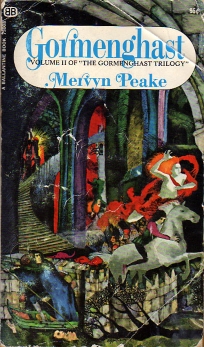 Let’s consider Mervyn Peake’s Gormenghast books. As I recall, they have their own geography, their own history, people with their own distinct culture — but the natural laws are the laws of this world. So that’s three characteristics, not four. If we consider Peake’s work as taking place in a fantasy otherworld, which most people would, then perhaps we should say that only three out of four characteristics are needed.
Let’s consider Mervyn Peake’s Gormenghast books. As I recall, they have their own geography, their own history, people with their own distinct culture — but the natural laws are the laws of this world. So that’s three characteristics, not four. If we consider Peake’s work as taking place in a fantasy otherworld, which most people would, then perhaps we should say that only three out of four characteristics are needed.
What about Clarke’s Jonathan Strange & Mr. Norrell? No fantastic geography there, but the world has its own logic, its own history, and the people in it … well, they think of themselves as English, but as we go further into the book, I think we come to realise that they’re not exactly Englishmen as we know them. They’re Englishmen of a very specific England, which is not our own (I understand that the book is in part about, or a meditation on, Englishness; what I’m arguing is that it accomplishes this by imagining an Englishness that is not of this world).
The characters act slightly but I think significantly different, especially when magic’s concerned. In fact, one can go farther: there are elves in the book, and they definitely have their own culture. But the key thing, I think, is that we’re meant to think of these characters as residents of a world shaped by the presence and recent absence of magic, of a world where wars with Elven lands are part of history. In other words, we don’t ultimately think of them as being native to the England of this world. Clarke’s book therefore fits three characteristics, like the Gormenghast books. Hmm.
Any other fringe cases? Well, what about Alice’s Wonderland? It has a frame connecting it to the real world, but for the purposes of this exercise: It has its own logic, certainly. It has inhabitants with their own culture, in the sense that they generally act in ways peculiar to their own world, and we’re clearly not meant to think of them as residents of ours. It has a kind of geography, but not exactly history to speak of, in that the characters mostly seem static, and as I recall don’t have a background of significant interactions that have shaped them (indeed, when a mouse promises to tell Alice his history, he produces a nonsensical ramble about William the Conqueror. Something similar happens later, when the Mock Turtle tries to tell her about his life). Still, that’s three characteristics.
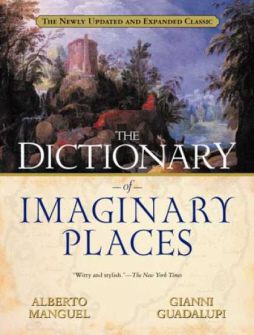 And the sequel? The world Alice found through the looking glass has its own logic, inhabitants who act in accordance with that logic, but no geography; space doesn’t really exist as it does here. And time … well, time follows its own weird laws. Alberto Manguel (in his Dictionary of Imaginary Places) notes that “because time in Looking-Glass Land flows backwards as well as forwards, it is possible to remember things that will happen much later.” This is pretty dicey. If you count the world as having a history, just all out of order, then I suppose you could count it as a coherent world. If not, then not. Can the people in the world be said to actually have a distinct behaviour if they don’t have a passing time in which to act? It seems to me that the answer is ‘no’. So … if you think the looking-glass world has three characteristics (logic, society, and history), then you have a fantasy world. If it only has two, then you don’t have a world.
And the sequel? The world Alice found through the looking glass has its own logic, inhabitants who act in accordance with that logic, but no geography; space doesn’t really exist as it does here. And time … well, time follows its own weird laws. Alberto Manguel (in his Dictionary of Imaginary Places) notes that “because time in Looking-Glass Land flows backwards as well as forwards, it is possible to remember things that will happen much later.” This is pretty dicey. If you count the world as having a history, just all out of order, then I suppose you could count it as a coherent world. If not, then not. Can the people in the world be said to actually have a distinct behaviour if they don’t have a passing time in which to act? It seems to me that the answer is ‘no’. So … if you think the looking-glass world has three characteristics (logic, society, and history), then you have a fantasy world. If it only has two, then you don’t have a world.
Consider, again just for the purposes of the exercise, Hardy and Faulkner. No fantasy logic there, and characters who act just like people in this world — indeed, who are people in this world, or at least that is how we are meant to imagine them. The geography’s fantastic, but only Faulkner gave it a history. Even then, we’re looking at two characteristics from the list at most.
What about fantasies that aren’t set in another world? Let’s say Dracula. There’s a fantastic logic; vampires exist. They have a history; Van Helsing knows about them, and is able to specify the rules by which they live — he’s studied them. But the geography is the same as this world, and we’re meant to identify the characters as characters of the Europe we know. In other words, the fictional world of the book is meant to imitate this world, not create a new one.
I think the same holds true of even more elaborate fantasies. Consider, say, Buffy the Vampire Slayer. The history’s more extensive than Dracula, the logic more detailed and covers more ground (more different kinds of monsters), but the geography’s essentially the real world, and we’re meant to understand the characters as inhabitants of, fundamentally, the world we know.
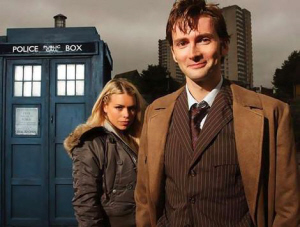 A useful point of comparison here might be to look at Jonathan Strange & Mr. Norrell, on the one hand, and Doctor Who on the other. I’ve described why I think the former constitutes an otherworld; it has everything except geography. Doctor Who has its own (science fictional) logic, its own history in which the Earth has encountered Daleks and Cybermen and so forth — but not only is the geography the same as the real world, the human characters are remarkably unaware of the history of alien incursions around them. Unlike Susannah Clarke’s Englishmen, the Englishmen of Doctor Who are in fact meant to be the Englishmen (and Welshmen and Scots and so forth) of this world, and the viewer is meant to relate to them as such.
A useful point of comparison here might be to look at Jonathan Strange & Mr. Norrell, on the one hand, and Doctor Who on the other. I’ve described why I think the former constitutes an otherworld; it has everything except geography. Doctor Who has its own (science fictional) logic, its own history in which the Earth has encountered Daleks and Cybermen and so forth — but not only is the geography the same as the real world, the human characters are remarkably unaware of the history of alien incursions around them. Unlike Susannah Clarke’s Englishmen, the Englishmen of Doctor Who are in fact meant to be the Englishmen (and Welshmen and Scots and so forth) of this world, and the viewer is meant to relate to them as such.
(An odd parallel here, it strikes me, might be the worlds of Marvel and DC Comics. In both cases, you started out with stories set essentially in this world, stories which happened to have a few fantastic elements; but as time went on, and more stories took place in those settings, the fantasy grew. Magic was found to work. Characters uncovered elements of the history of their world — Atlantis, say. Even geography turned out to be different from this world, as fictional countries were imagined to exist. But, ultimately, this process was so extensive that these settings became established as specifically not this world. On the one hand, the idea of ‘the Marvel Universe’ took root; on the other, well, while it’s difficult to sum up the DC Comics cosmography, in general its main characters are said to exist on ‘Earth One’, while our world, in which superheroes exist only in comics, is said to be ‘Earth Prime’. Perhaps, these days, the habit of imagining fantasy as taking place on another world is so ingrained that as fantasies ostensibly set in this world develop and extend their fantasy, and gain in richness and detail, they necessarily come to exist in a world of their own.)
At any rate, as far as I can see, it seems that out of four characteristics which between them can go to make up a fantasy world, you need to have at least three: the logic that makes the fantasy, the geography that makes the physical world, the history that makes up the social or political world, and the people who live in it and establish a specific identity for the world. How does this help with Morris?
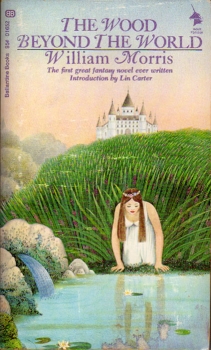 The Well at the World’s End has its own logic; there’s magic in it. It has its own history — but the geography runs into the geography of Europe, including Rome and Babylon. What about the people of the world? How different are they from people in the real world?
The Well at the World’s End has its own logic; there’s magic in it. It has its own history — but the geography runs into the geography of Europe, including Rome and Babylon. What about the people of the world? How different are they from people in the real world?
Clearly, they act a lot like medieval Europeans. The society is based on medieval Europe, as in a lot of fantasies. But here’s the question: do they act like medieval Europeans, or are they actually medieval Europeans? They have a specifically Christian, and Catholic, culture — there are saints, priests, Rome, and so forth. I don’t think that the fantastic has caused any significant difference in their culture; the people act toward the supernatural essentially as medieval Europeans might have. It seems to me, all in all, that the society of The Well at the World’s End is more ‘historical fiction’ (or, I guess, ‘historical pastiche’) than ‘fantasy’.
If that’s so, then that’s really only two characteristics out of four. Which would mean that the world of the story’s not quite independent enough to be an independent world. It’s fantasy, but I think it just misses being a high fantasy.
I’d say that the fact that the people act in all essentials just as medieval Europeans did — that is, that we’re meant to recognise them as medieval Europeans, complete with Christianity — suggests that Morris is sticking close to his literary inspirations, the medieval romances which made up geography as they needed to. The world of the book is closer to Yoknapatawpha County (a fictional land populated by Americans who we’re meant to relate to as Americans) than Tolkien’s Arda (a fictional land populated by people like medieval Europeans, but not people we’re meant to consider as medieval Europeans).
So, that’s a no to The Well at the World’s End. What about The Wood Beyond the World?
That’s a bit different. The setting has magic in it. The people act like medieval Europeans, complete with Christianity — but the geography is wholly invented, and it has its own history. So it has three out of the four characteristics. I would call that high fantasy, set in an invented secondary world.
It’s just not the first high fantasy.
More on that here, a bit more here, and I name the book I think is the first otherworld fantasy here.
Matthew David Surridge is the author of “The Word of Azrael,” from Black Gate 14. His blog is Hochelaga Depicta.
This is a marvelous article, Matthew.
It evens makes me want to read Absalom, Absalom, and that’s no small feat. 🙂
– John
Thank you very much!
I have to admit I’ve not read Absalom, Absalom myself; it’s one of the books I’ve been meaning to get around to, not least because it turns up in some interesting places: http://www.songfacts.com/detail.php?id=3333
At any rate, you can see the map (sort of; it’s pretty small) here:
http://www.mcsr.olemiss.edu/~egjbp/faulkner/glossaryy.html#Yoknapatawpha_map
[…] and You.Ryan Britt on I Can Has Ray Gunz! Cat-People in Science Fiction.Matthew David Surridge on Worlds Within Worlds: The First Heroic Fantasy (Part I).Mike Brotherton on Where is the Science Fiction Writer’s Promised Land?Rachelle Gardner on Writing […]
[…] like a simple question: who wrote the first fantasy set entirely in another world? As I found in my first post, to answer that question you first have to decide how to define a fantasy otherworld. I came up with […]
[…] the first post, I considered how to identify a fictional otherworld. I suggested four characteristics, of which a […]
[…] investigating the question of who wrote the first otherworld fantasy (you can find the first part here, the second here, and the third here). By ‘otherworld fantasy’ I mean a story set entirely in […]
[…] Black Gate, Matthew David Surridge is on a quest to find The First Heroic Fantasy: part one, part two, part […]
[…] Tracing the roots of fantasy is a fascinating exercise. From whence did works of pure fancy spring? How far back do we go to find their source? Are its origins to be found in works like The Epic of Gilgamesh, or The Iliad and The Odyssey (for a great series of posts on the subject, look no further than Matthew David Surridge’s four part series Worlds Within Worlds ). […]
[…] think I first started to get a hint of what I was looking for when I was putting together the series of posts about Sara Coleridge, the first writer of heroic fantasy. In those posts, I tried to […]